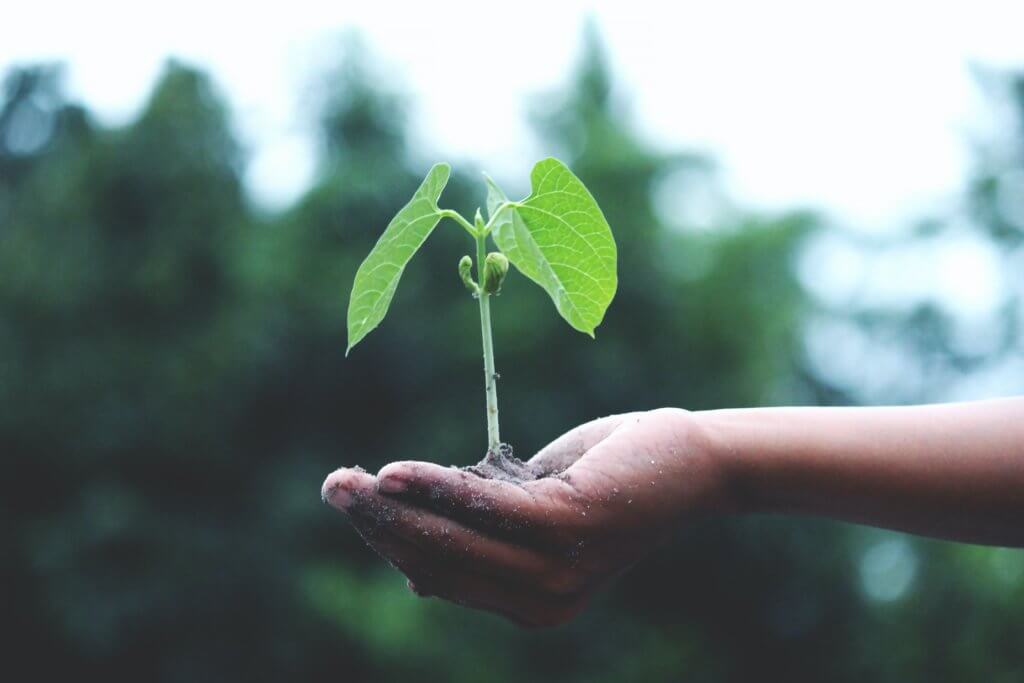An organic restaurant with a small menu against food waste or sustainable products in the supermarket. A great development that such socially responsible initiatives are growing within Europe. It is worth noticing that sustainable restaurants are still scarce within the food delivery market. In this blog we delve into this remarkable phenomenon and expose the opportunities for delivery restaurants giving a number of examples.
Trend: Consumers choose fair, sustainable and pure products
It is a well-known development of recent years: consumers demand that producers are transparent about the origins of their products and increasingly choose high quality, sustainable and/or organic products. The packaging also adapted to this trend and is making great strides in terms of transparency and sustainability. The fact that this goes hand in hand with higher prices is something that customers are willing to accept. Because of this need, organic supermarkets and specialty stores such as bakeries can continue to distinguish themselves from large supermarket chains who are able to offer increasingly lower prices due to ever-growing economies of scale.
Recently, Covid-19 and the corona crisis that followed have accelerated this trend. It is obvious that this had to do with the period in which the hospitality industry was (partially) closed. During the intelligent lockdown, many consumers found their way to the bakeries and butchers in order to fulfill their need for sustainable food of high quality.
How do (delivery) restaurants respond to this trend?
In recent years, the traditional hospitality industry has also responded to this trend with high numbers of brand new organic restaurants and/or sustainable products. One concept focuses on health, the other on food waste and a third on animal welfare. In other words, there are plenty of opportunities to appeal to this broad target group of conscious consumers. We have noticed that the market for food delivery is still lagging behind in such developments. Why is that?
Since the corona crisis, people increasingly choose to order food instead of visiting a restaurant. This is also the case at Just Eat Takeaway and UberEats, where the number of orders increased by about 25% during the first half year of 2020. In addition, the trend mentioned above is expected to carry on in the coming years. According to CashDesk, there are plenty of opportunities for delivery restaurants to stand out in terms of transparency and sustainability.

Opportunities for restaurants within the food delivery industry
Look at how (organic) supermarkets, bakeries, butchers and traditional catering establishments are responding to this trend, and translate such initiatives to the food delivery market. Below are a number of ideas/examples:
Transparent packaging:
In recent years, supermarkets have been more transparent about the origins of their (sustainable) products through packaging. For example, packaging nowadays must comply with all sorts of rules and the number of calories is stated on each package.
As a delivery restaurant within the food delivery market, all these things, perhaps in a different form, are also possible. You could make a number of concrete changes with regard to transparency about the origin of your (sustainable) products:
- Add a page on your website talking about the origins of your sustainable, local or organic products. Which suppliers do you work with, and why? A page can also have a positive influence on your rankings in Google.
- Give your customers insight into your products by providing information about the included ingredients, micronutrients and calories when they place an order. You could also add this information to your online menu. Customers who are conscious of their diet will be grateful!
The fastcasual concept:
Many restaurants who receive guests use the successful fastcasual concept where guests can watch live how their meal is prepared. In multiple traditional restaurants, your dish is prepared right in front of you by the chefs while you can pass on your specific wishes directly to them. Freely translated to the food delivery, you could place a camera in the kitchen and let customers watch their order being prepared through a live stream.
“Nothing is more expensive than a missed opportunity”
We are aware that these are just examples which are undoubtedly not perfect either. Is it not possible to apply these examples to your delivery restaurant? Then we urge you to start investigating for yourself. When you are eating in a sustainable restaurant or doing groceries in an organic supermarket, keep your eyes open and pay attention to how they are working on transparency and sustainability. In addition, think about how socially responsible your restaurant is and how you communicate this to the outside world. Investments like this always pay off in the long run. Good luck!
Thank you for reading,
CashDesk
 CashDesk NL
CashDesk NL CashDesk BE
CashDesk BE CashDesk EN
CashDesk EN CashDesk DE
CashDesk DE


